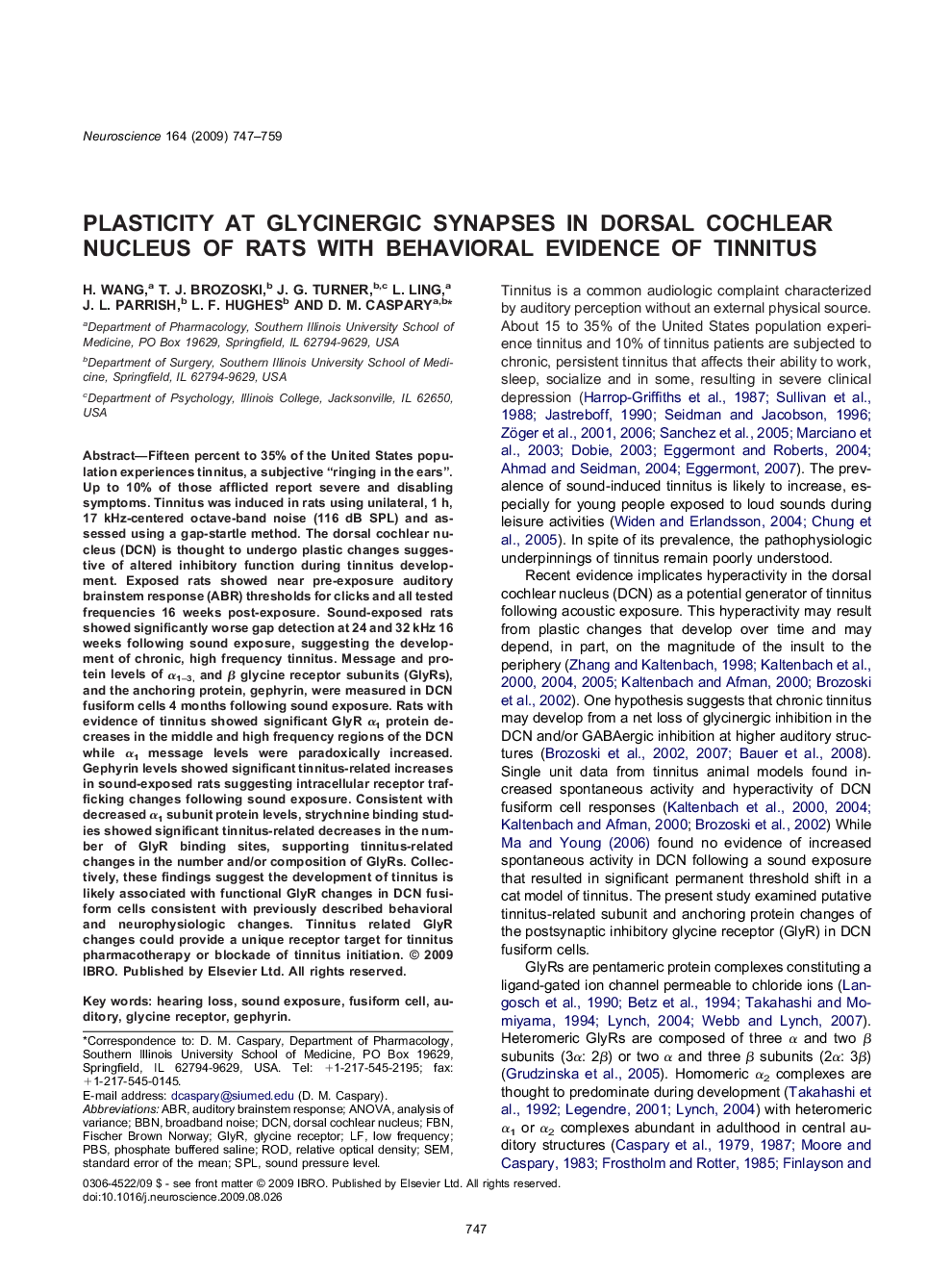| کد مقاله | کد نشریه | سال انتشار | مقاله انگلیسی | نسخه تمام متن |
|---|---|---|---|---|
| 4339822 | 1295768 | 2009 | 13 صفحه PDF | دانلود رایگان |

Fifteen percent to 35% of the United States population experiences tinnitus, a subjective “ringing in the ears”. Up to 10% of those afflicted report severe and disabling symptoms. Tinnitus was induced in rats using unilateral, 1 h, 17 kHz-centered octave-band noise (116 dB SPL) and assessed using a gap-startle method. The dorsal cochlear nucleus (DCN) is thought to undergo plastic changes suggestive of altered inhibitory function during tinnitus development. Exposed rats showed near pre-exposure auditory brainstem response (ABR) thresholds for clicks and all tested frequencies 16 weeks post-exposure. Sound-exposed rats showed significantly worse gap detection at 24 and 32 kHz 16 weeks following sound exposure, suggesting the development of chronic, high frequency tinnitus. Message and protein levels of α1–3, and β glycine receptor subunits (GlyRs), and the anchoring protein, gephyrin, were measured in DCN fusiform cells 4 months following sound exposure. Rats with evidence of tinnitus showed significant GlyR α1 protein decreases in the middle and high frequency regions of the DCN while α1 message levels were paradoxically increased. Gephyrin levels showed significant tinnitus-related increases in sound-exposed rats suggesting intracellular receptor trafficking changes following sound exposure. Consistent with decreased α1 subunit protein levels, strychnine binding studies showed significant tinnitus-related decreases in the number of GlyR binding sites, supporting tinnitus-related changes in the number and/or composition of GlyRs. Collectively, these findings suggest the development of tinnitus is likely associated with functional GlyR changes in DCN fusiform cells consistent with previously described behavioral and neurophysiologic changes. Tinnitus related GlyR changes could provide a unique receptor target for tinnitus pharmacotherapy or blockade of tinnitus initiation.
Journal: Neuroscience - Volume 164, Issue 2, 1 December 2009, Pages 747–759